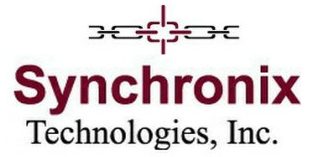Free DBR – We did offer A Free Drum-Buffer-Rope Excel spreadsheet
Many of our clients over the past 30 years have benefited from the powerful spreadsheet-based DBR Drum-Buffer-Rope solutions we have developed.
In fact, our first major implementation was in a pre-Windows environment; using Lotus 1-2-3, which most readers won’t even remember. We scheduled a Pharmaceutical plant with hundreds of SKUs serving 1000’s of stores, and won an acknowledgement from the CEO of a major corporation (a competitor) that our solution out-performed the 8-figure implementations of a major ERP package that his numerous plants had undertaken at the time. He visited our client because he had to see for himself that the president of our client had been telling the truth about the solution.
For the decades since, we have constructed powerful Excel spreadsheets able to schedule simple environments when a software solution was justified, and complex production environments when a software solution was essential.
Our spreadsheets “sit on top of” a company’s existing system of record (if they have one), usually an ERP system, and extract the data we need to build a schedule using DBR principles.Most IT managers are happy to hear that we do not push data back into their system.
What we offer is far more than a simple DBR schedule. We can model complex multi-shift shop Calendars; complex production environments; and our Buffer Management applications use Buffer Boards to support both day-to-day shop floor actions but also priority management via buffer penetration factors, and focused continuous improvement by tracking the causes of threats to constraint and shipping buffers. “Expediting” becomes a controllable activity. And it’s common for our clients to achieve 98.5% on-time delivery using these spreadsheets, with fast flow through resources leading to short cycle times and low work-in-process and finished goods inventories.
If it’s not already clear, these are not “just” spreadsheets. Clients joke that when they turn them on, there are brown-outs in the electrical grid in nearby counties.
And we offer some advanced concepts beyond the classic DBR solution.
We can take the “Drum” schedule on the constraint and “dollarize” it, to show planned Throughput dollars per day, and cumulative $Throughput per day, charted alongside accumulating Operating Expense for a month. (These are applications emerging from Throughput Accounting principles.) This plus the Throughput-per-hour database helps a company avoid those situations where the plant looks busy, might even need overtime, yet at the end of the month the expected profit didn’t materialize.
We can show the Planned Load on the Constraint or Constraints, out into the future. We plot $Throughput per minute or per hour; we have a Throughput-based “earned Throughput per hour” matrix to help with pricing, process improvement, and making sure the intended return on sales will be achieved.
We have a capacity distribution chart to show a company how well it’s deploying it’s capacity in terms of the distribution profile of $Throughput per hour versus hours on the CCR over weeks, months, years. Even, breaking this down into Throughput per customer, and Throughput per hour per client; and going further, drilling down to every individual product in the product group sold to each customers.
Now, for a couple of years we recommended that our clients implement 3rd party dedicated DBR software as a better solution than our spreadsheets.
Good software is of course a more robust solution, even though our spreadsheets have been in place for years in some clients. Dedicated software can be more flexible; if Constraints “move” it can be easier to adjust formal software to deal with the changes. And there are more features, as well as more bells and whistles.
But we’ve been compelled to return to offering spreadsheets again. What happened is that software vendors who work with larger companies than our clients didn’t perform well when we brought them in to work with smaller clients. These smaller companies don’t have the resources that the bigger companies do, and they need MORE support, not less. Plus, of course the software License fees tend to be what the bigger companies can afford; and the support rates for education, implementation planning, implementation and coaching are aimed at the big corporations and simply out of reach of the smaller companies we love to work with.
So yes — we are wholly supportive of good TOC-compliant 3rd party software where it fits and where the commercial terms are appropriate for our clients. But we now routinely make our Excel-based spreadsheets available again.
For some companies, these are all they’ll ever need to out-perform their competitors. For others, we position our spreadsheets as a temporary solution — a full-functioning DBR system so they can “get a feel” for DBR, learn what they’d like in a dedicated 3rd party system, then take their experience into their selection process for packaged software or their design requests for custom-built software.
In reality, most are content with the system we give them. We adapt it closely to their environment and their needs, and they just don’t see the need to take it further.
All of which is leading to the point: yes, when we shifted to recommendations of 3rd party software we made a “Template” Excel system available for free.
But we have never updated the version we built to stay up to date with Excel releases; and now we build the tailored spreadsheets as a fee-based service.
So, we have withdrawn the FreeDBR from being available. Sorry.
However, if you are interested in a paid version or a TOC implementation, with or without our spreadsheet approach,
Our office phone (8:30 to 5 PST) is as follows:
The following email is not clickable, sorry, but the spam robots are getting ever-smarter at harvesting even camouflaged “live” email addresses.

